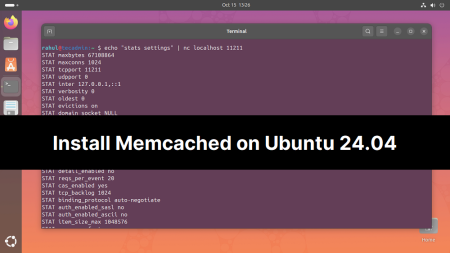Introduction
The LEMP stack, consisting of Linux, Nginx, MariaDB, and PHP-FPM, is a powerful combination for hosting dynamic websites and applications. CentOS/RHEL, known for its stability and security, is an ideal choice for setting up such an environment. This guide will provide detailed instructions on installing and configuring Nginx, MariaDB, and PHP-FPM, with an emphasis on a specific PHP version to meet the requirements of various applications.
1. Preliminary System Update
- Update your system packages:
sudo dnf updatesudo dnf upgrade - Enable the EPEL repository:
sudo dnf install epel-release
2. Installing Nginx
- Install Nginx:
sudo dnf install nginx - Start and enable the Nginx service:
sudo systemctl start nginxsudo systemctl enable nginx - Verify the Nginx installation:
sudo systemctl status nginx
3. Installing MariaDB
- Install MariaDB:
sudo dnf install mariadb-server - Start and enable MariaDB:
sudo systemctl start mariadbsudo systemctl enable mariadb - Secure your MariaDB installation:
sudo mysql_secure_installation
4. Installing PHP and PHP-FPM
- Install a specific version of PHP and PHP-FPM (for example, PHP 7.4):
sudo dnf install php74 php74-php-fpm php74-php-mysqlnd - Start and enable PHP-FPM:
sudo systemctl start php74-php-fpmsudo systemctl enable php74-php-fpm
5. Configuring Nginx to Use PHP-FPM
- Edit the Nginx configuration file:
sudo nano /etc/nginx/conf.d/default.conf - Configure Nginx to process PHP with PHP-FPM:
location ~ \.php$ { fastcgi_pass unix:/var/run/php74-php-fpm/www.sock; fastcgi_index index.php; fastcgi_param SCRIPT_FILENAME $document_root$fastcgi_script_name; include fastcgi_params; } - Restart Nginx:
sudo systemctl restart nginx
6. Testing PHP Processing
- Create a PHP test file:
sudo nano /usr/share/nginx/html/info.php - Insert PHP code and save:
<?php phpinfo(); ?> - Access http://your_server_ip/info.php to see the PHP info page.
7. Configuring the Firewall
- Allow HTTP and HTTPS traffic if firewalld is enabled:
sudo firewall-cmd --permanent --add-service=httpsudo firewall-cmd --permanent --add-service=httpssudo firewall-cmd --reload
8. Securing Your Server
- Keep your packages updated.
- Use robust passwords for all services.
- Consider SSL certificates for HTTPS.
Conclusion
You have now successfully set up a LEMP stack on CentOS/RHEL with Nginx, MariaDB, and a specific version of PHP-FPM. This environment is ideal for deploying a range of web applications, offering reliability and performance. Regular maintenance and security measures are essential to ensure the smooth functioning of your server.



1 Comment
nice article!